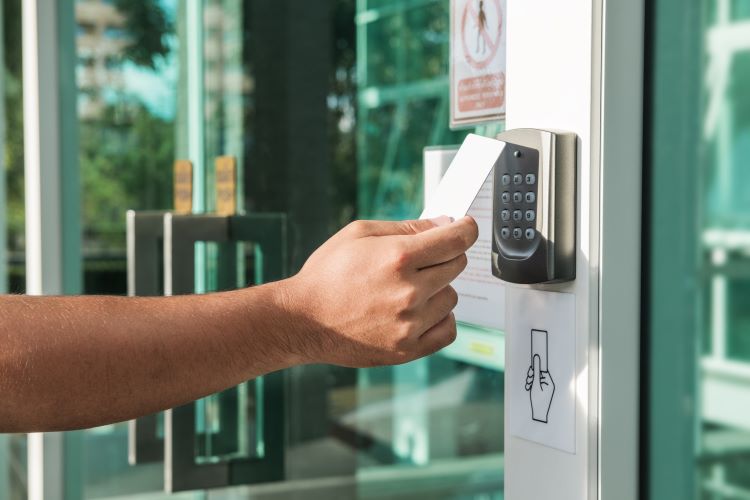
You might have seen one of these cards that require no contact to open doors, and maybe you wonder how they work. Cards of that nature are called proximity cards or prox. cards. These cards come in 30 mil PVC size and do not require contact or insertion into a machine to access the information in them. Usually, these cards have metal antenna coils in them, which allow them to store information. Since these cards do not require contact, you can use them in a purse or wallet, and they'll serve just the same purpose.
So, how do these cards work, and what are their applications in the world of today? All these and more will be the focal point of our discussion in this article; keep reading to learn more.
How Does a Proximity Card Reader Work?
Proximity card readers usually exist as part of a large access control system. The access control system consists of the following:
- Access control system panel
- Card readers that might have a keypad
- Proximity cards
- Electric door lock hardware
- A computer that manages the entire system
In every proximity card, there is an antenna with which the card transmits Radio Frequency identities (RFID) to the card reader. Encoding these ID cards takes place while printing is ongoing, and it is in these RFID antennas that the cards store information. These antennas also help the card effectively engage in wireless communication with the card reader.
Many organizations have their card readers fitted to doors. From where they are, the card readers emit electromagnetic field that experts call the excite field. This field is large enough and covers a large radius around the card reader.
When you bring your proximity card into this field, the card will absorb some of the field’s energy and convert it to electricity. That way, the card's circuit turns on so the card can transmit its numbers to the card reader.
The card reader immediately transmits the numbers from the card to the control system. While the card has wireless communication with the reader, the reader has wires to send data to and from the system. The access control system goes through the database saved on the computer to see if the number encoded in the card is valid and if the number has access to open such doors. If the card has approval, the control panel will send a signal that unlocks that door for the time being.
Proximity cards and card readers come in different types. The type of card and card reader you need will depend on the transmission distance (called read range) you want the card to work with. Generally speaking, larger readers can read cards from longer distances. Also, the type of installation can affect the read range of card readers. To achieve the maximum range of a card reader, it's best that you mount it away from metals.
Why Use Proximity Cards
Today, proximity cards are commonly used in many organizations like schools, hotels, corporate offices, and banks to secure sensitive property and protect lives. When used in these environments, proximity cards have the following benefits:
- Proximity cards are easy to use; unlike keys, there are no special tricks to use them.
- In a situation where the cardholder loses his key, you can easily reprint and program a new card.
- Unlike keys, there is no such thing as a spare card key, so your safety is guaranteed.
- The system allows you real-time security. If you notice a security breach, you can lock people out even if they already have key cards.
- With proximity cards, there is no need to remember access codes.
Contact Koorsen Today for Access Control Systems & Proximity Cards
Looking to outfit your business with an access control system? Contact the access control experts at Koorsen Fire & Security to learn more about proximity cards, card readers, and access control systems that will meet your business needs.


